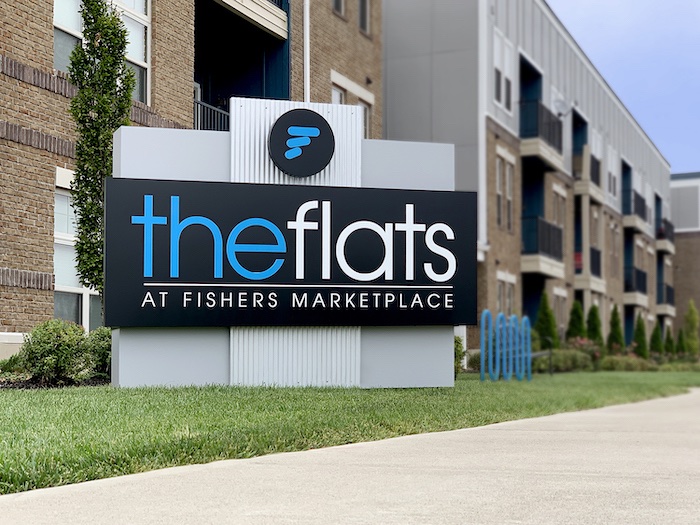No matter who you are or what you do, it’s likely that you understand the importance of outdoor signs. Not only do they convey a message, but they grab the reader’s attention and make them consider things they may not have a few seconds before— such as buying a hot dog, signing up for a class, or even something like upgrading the family home!
Regardless of its purpose, outdoor signs are crucial for businesses, organizations, and individuals alike. From large billboards to small yard signs, these signs are exposed to the elements, unlike their indoor counterparts. This makes the choice of material vital for its durability and visibility. But what is the right material, and can there be more than one?
This article explores the different materials often used for outdoor signs so you can determine what may work best for your needs. For personalized advice, contact our team at Signworks today.
Factors to Consider for Outdoor Signs
When selecting a material for your outdoor sign, there are several factors you need to consider.
1. Weather
Weather exposure is one of the most critical considerations. Whether your business is in Indianapolis, where the weather can be as unpredictable as the Indy 500, or in salty and seabreeze-filled Florida, it’s vital to think about how weather conditions will impact your signage.
2. Timing
While considering weather, don’t forget to think about the time of year that your signage will be outside. After all, December in Indiana offers quite different weather to a southern California summer, so ensure you factor in things like the UV levels, rain, and predicted snowfalls.
3. Lifespan
How long do you intend to use your sign for? If you’re putting up temporary signs for an event, you may be able to use a more affordable material (depending on the weather and other factors, of course). However, if you’re considering a permanent outdoor sign, it should be made from durable, long-lasting materials that can handle years of exposure to the elements.
3. Maintenance
Some materials are easier to clean and maintain than others, while some are more resilient to scratches and damage. Whatever your maintenance pain points are, these should play a role in deciding on your material. Consider how often your sign will need maintenance such as regular cleaning and periodic upkeep, and whether you’re prepared for the work (or to outsource it).
What is the Best Material for Outdoor Signs?
As there are so many factors to consider when it comes to your outdoor sign, there’s no one ‘best’ material for outdoor signage as a whole— it’s simply too broad with all of the options available to us!
With that being said, there are many popular materials commonly used for outdoor signs. These include:
1. Vinyl
Vinyl is a versatile and cost-effective material often used for outdoor banners, window decals, and temporary signage. It is:
- Flexible, making it great for wrapping around surfaces of all shapes and sizes, such as vehicles, windows, and buildings
- Weather resistant, withstanding rain, sun, and wind, making it especially useful for short-term outdoor signage
- Easy to use, as it can be installed with adhesives and cleaned with just soap and water
2. Aluminum
Aluminum is one of the most popular materials for outdoor signs, and for good reason! It is:
- Durable and rust-resistant, making them ideal for outdoor use in all kinds of climates including areas with high humidity, frequent rain, and strong UV rays
- Easy to maintain, requiring no more than water and mild detergent for cleaning, especially when coated with protective layers
3. PVC
Polyvinyl chloride, or PVC, is a durable plastic material that is:
- Versatile, as it can be cut to any thickness and can be printed on both sides, allowing for added visibility
- Lightweight, even when cut thickly
- Resistant to water and general wear and tear
4. Acrylic
Also known as plexiglass, acrylic is a clear, plastic material that is:
- Durable, as it’s both UV-resistant and resistant to cracking
- Versatile in its looks, as it can be clear or colored
- Professional-looking with its potential for backlighting and customization
5. Dibond
Dibond is an aluminum composite material containing two thin aluminum sheets with a solid plastic core. It is:
- Durable, with its resistance to harsh weather, UV rays, and corrosion, making it suitable for many different climates
- Professional-looking, as it can be custom cut, printed, and finished to achieve a polished look, making it a popular option for corporate signage and advertising
Want a Sign That Works? Choose Signworks
Regardless of the material you choose for your outdoor sign, our team at Signworks is here to bring it to life. Whether you need a temporary banner or a long-lasting sign designed to withstand the elements, we’ll guide you in choosing the right material for your needs. To find out more or to get started, contact us today.

